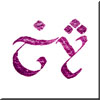Accessibility
Accessibility of articles depends on ring colour: white, red, or black.
 Reading Notes: Being presentations or compilations, these articles are accessible to all readers. No specific knowledge regarding J.R.R. Tolkien’s invented world is needed.
Reading Notes: Being presentations or compilations, these articles are accessible to all readers. No specific knowledge regarding J.R.R. Tolkien’s invented world is needed.
 Analytical Articles: These articles provide a detailed overview of the theme they cover. However, they require some prior knowledge of the main works of J.R.R. Tolkien.
Analytical Articles: These articles provide a detailed overview of the theme they cover. However, they require some prior knowledge of the main works of J.R.R. Tolkien.
 Theoretical Articles: A comprehensive knowledge of the works of J.R.R. Tolkien is needed to fully understand articles in this category, the subjects treated being studied in minute detail by their authors.
Theoretical Articles: A comprehensive knowledge of the works of J.R.R. Tolkien is needed to fully understand articles in this category, the subjects treated being studied in minute detail by their authors.
Difficulty
Difficulty depends on the number of coloured rings. 1  (very easy read) to 5
(very easy read) to 5  (very complex).
(very complex).













